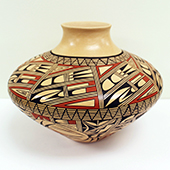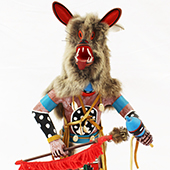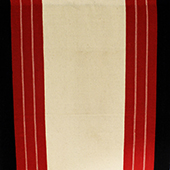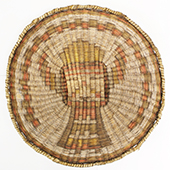Jewelry
Early Hopi jewelry was mostly multi-strand necklaces made of polished beads of stone, shell, bone, or wood. These items were not only beautiful, but also served a spiritual function. Hopi spirituality focuses on connections to the spiritual and natural worlds. Jewelry is a way to connect the Hopi to stories and mythology that are central to their way of life. Also, wearing jewelry made of natural materials like turquoise, called the stone of life, brings peace, security, and strength.
Like other Southwest tribes, the Hopi learned silversmithing from the Spanish in the 1800s. For a long period of time, it was difficult to distinguish between Hopi, Zuni, and Navajo silver jewelry because the designs, styles, and materials used were similar. Another factor that contributed to the confusion about Native jewelry was the fact that early silversmiths did not mark their work with any type of signature or stamp. Finally, in the 1930s some silversmiths began to mark their work; however, recordkeeping of these marks did not start until the late 1950s.
Eventually, Hopi silversmiths distinguished themselves by developing a distinctive style called silver overlay. The overlay technique uses two sheets of silver. An artist etches a design into the bottom sheet then cuts out the top sheet, so the designs show through. Next, the two silver sheets are soldered together. Finally, the top sheet is highly polished while the bottom sheet is left unpolished. After a time, oxidation creates a beautiful dark patina. Today, Hopi silversmiths are most famous for this style.
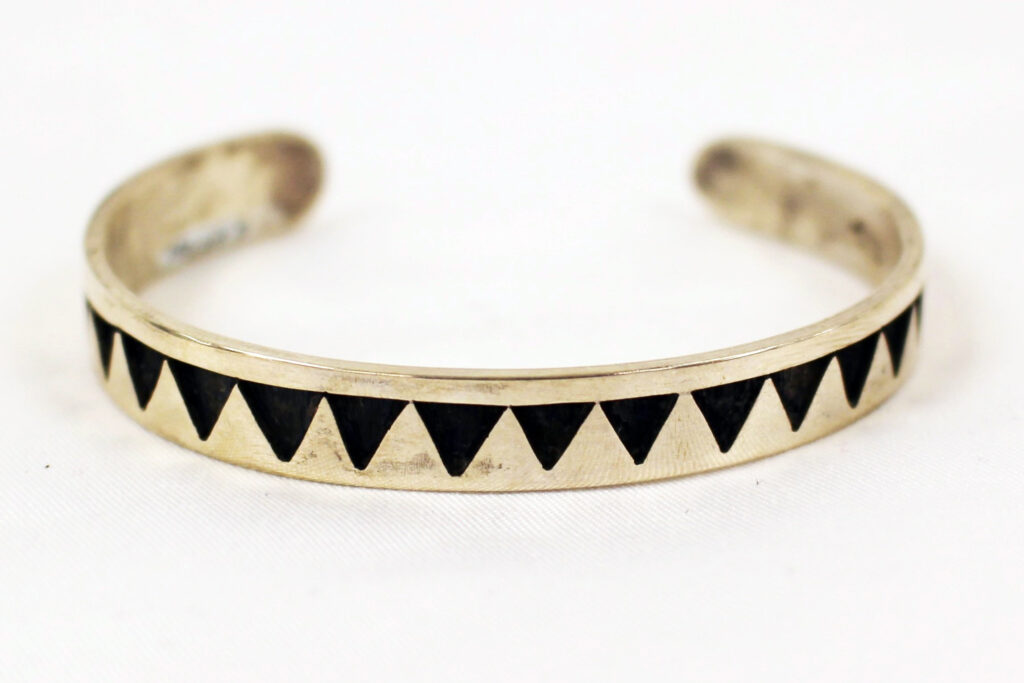
Silver with Triangle Inlay Bracelet
1993.02.E.07
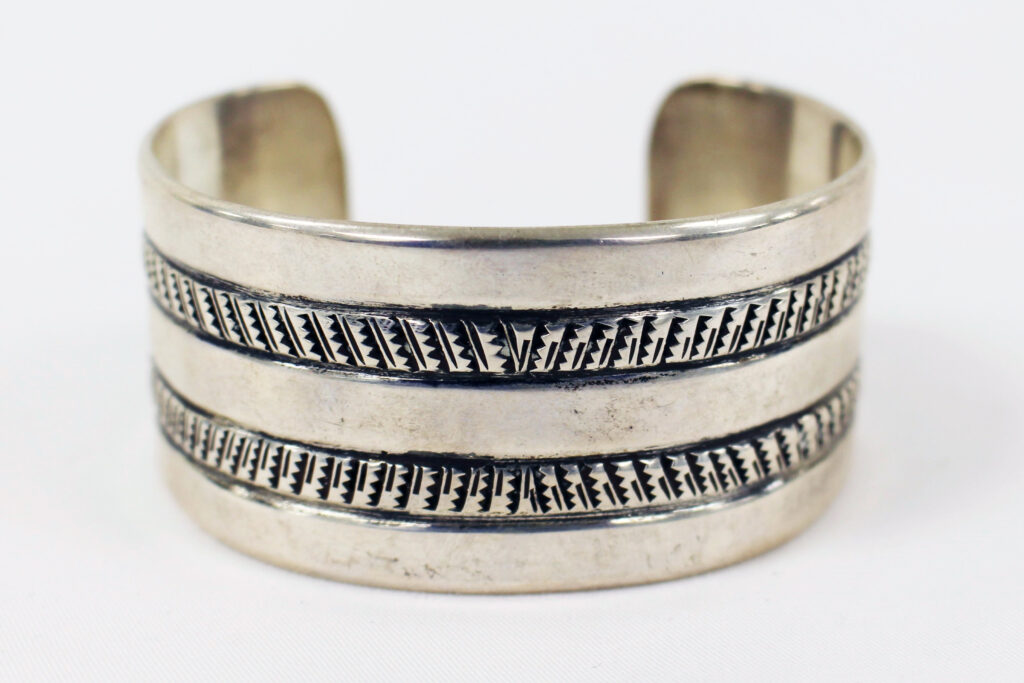
Silver Cuff with Engraved Feathers Bracelet
1993.02.E.09
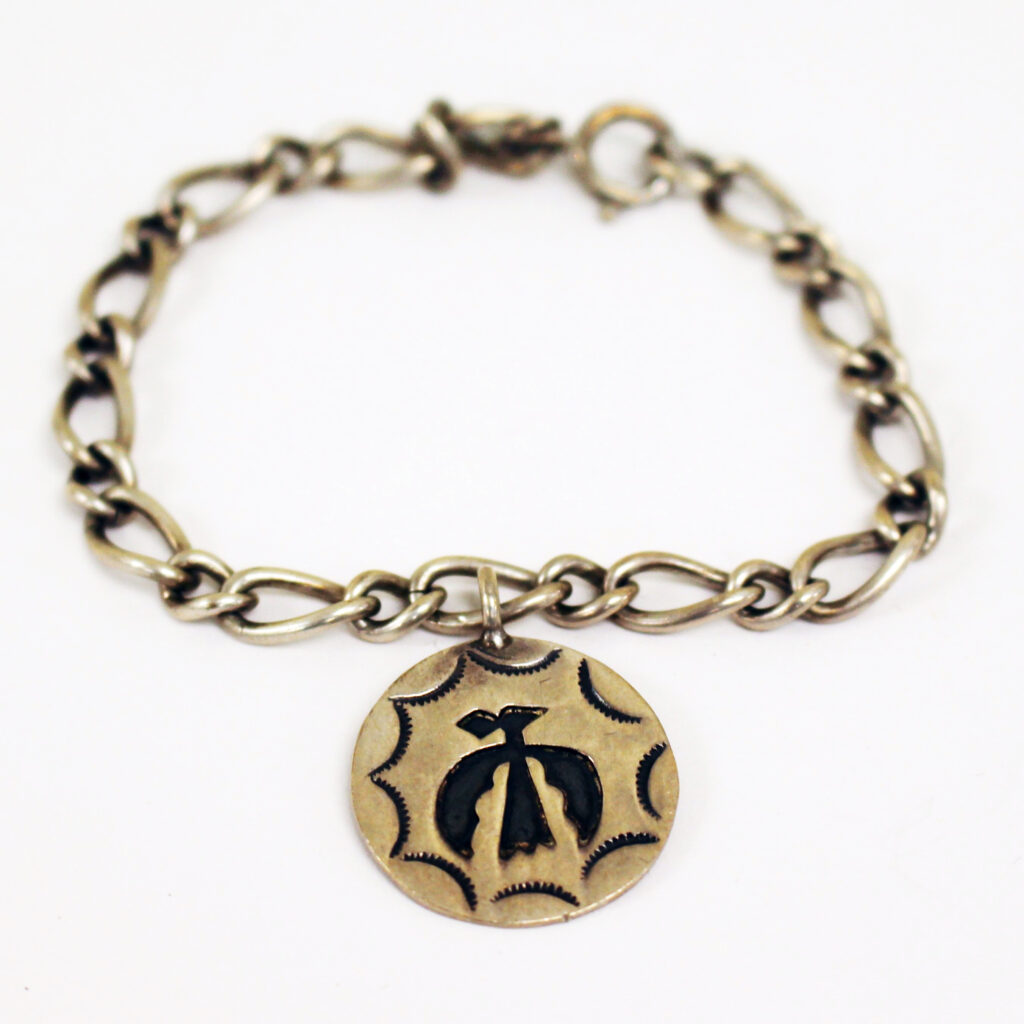
Silver Charm Bracelet
1993.02.E.19
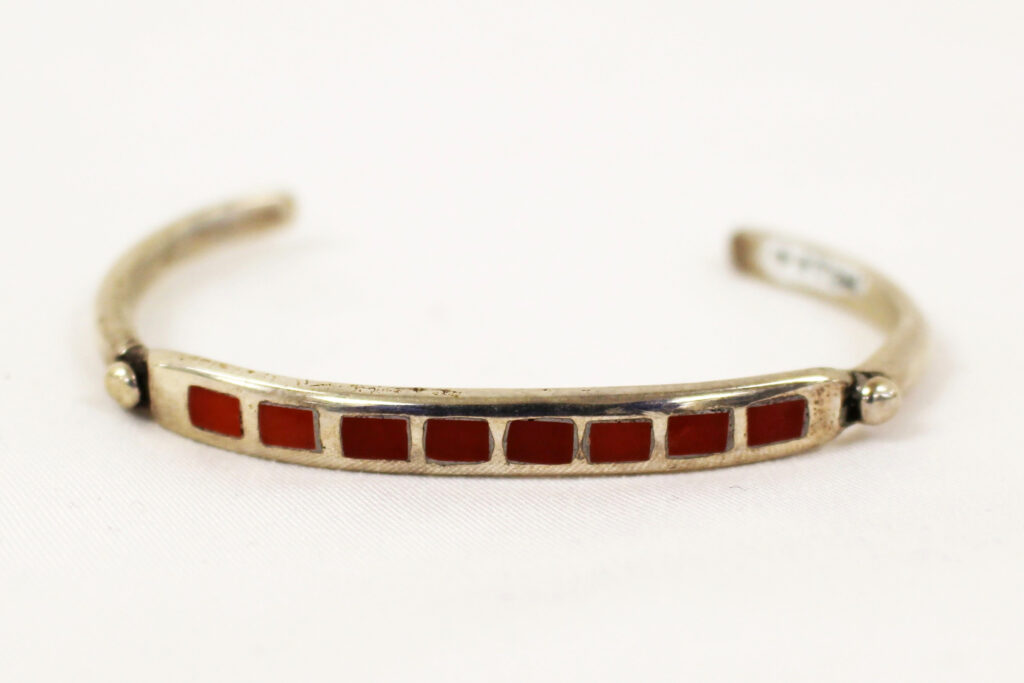
Silver and Coral Bracelet
1993.02.E.06
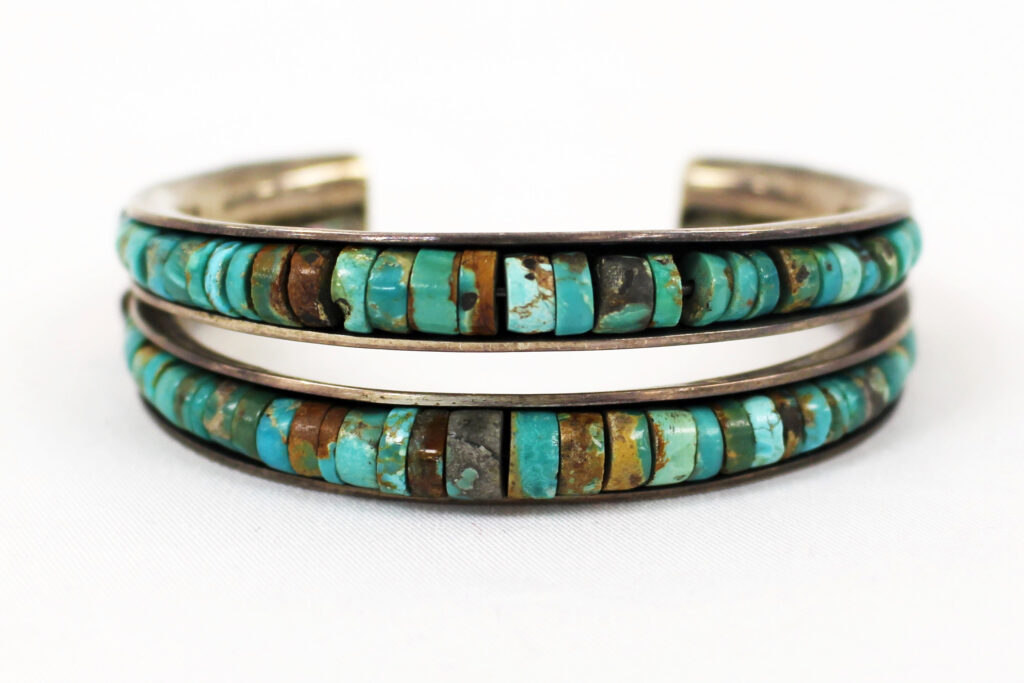
Silver and Turquoise Bracelet
Charles Loloma (1921-1991)
1993.02.E.10
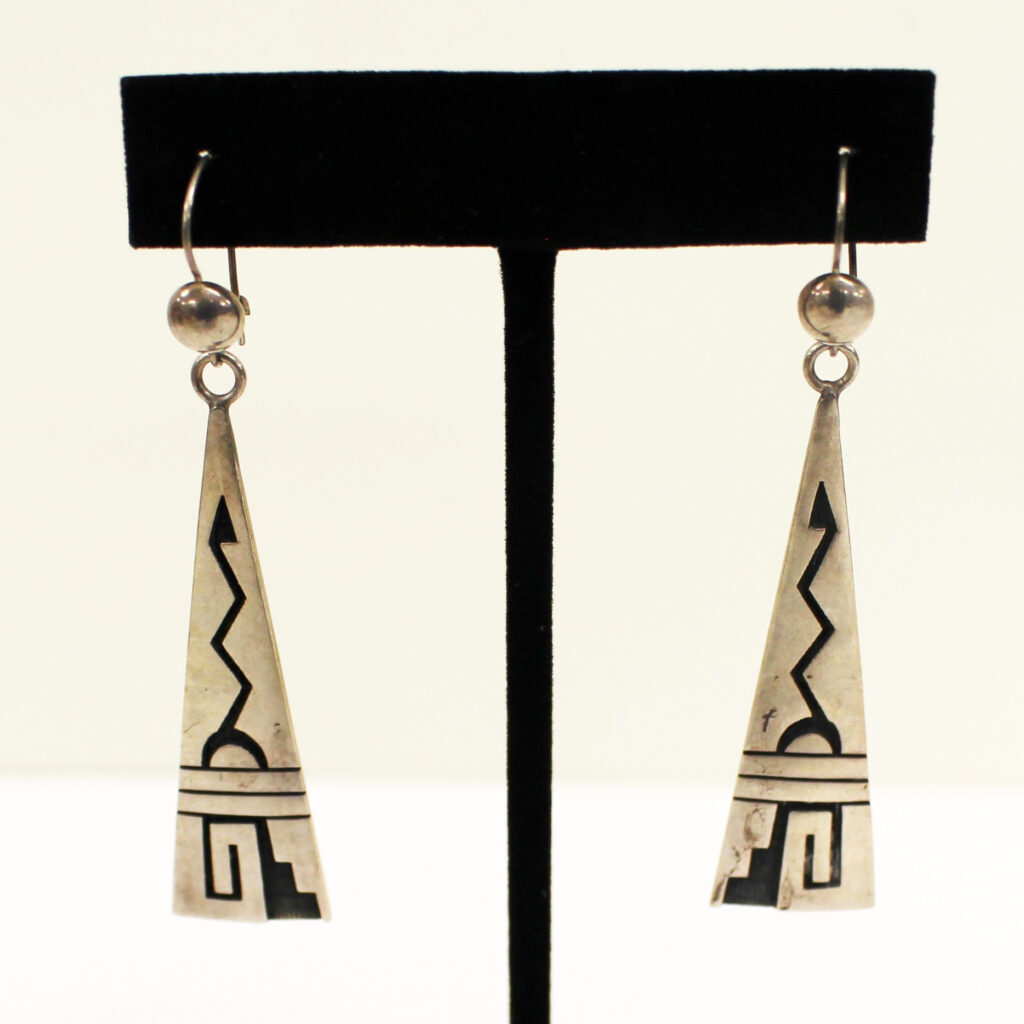
Earrings
Weaver Selina (1944-)
1993.02.E.17.a-b
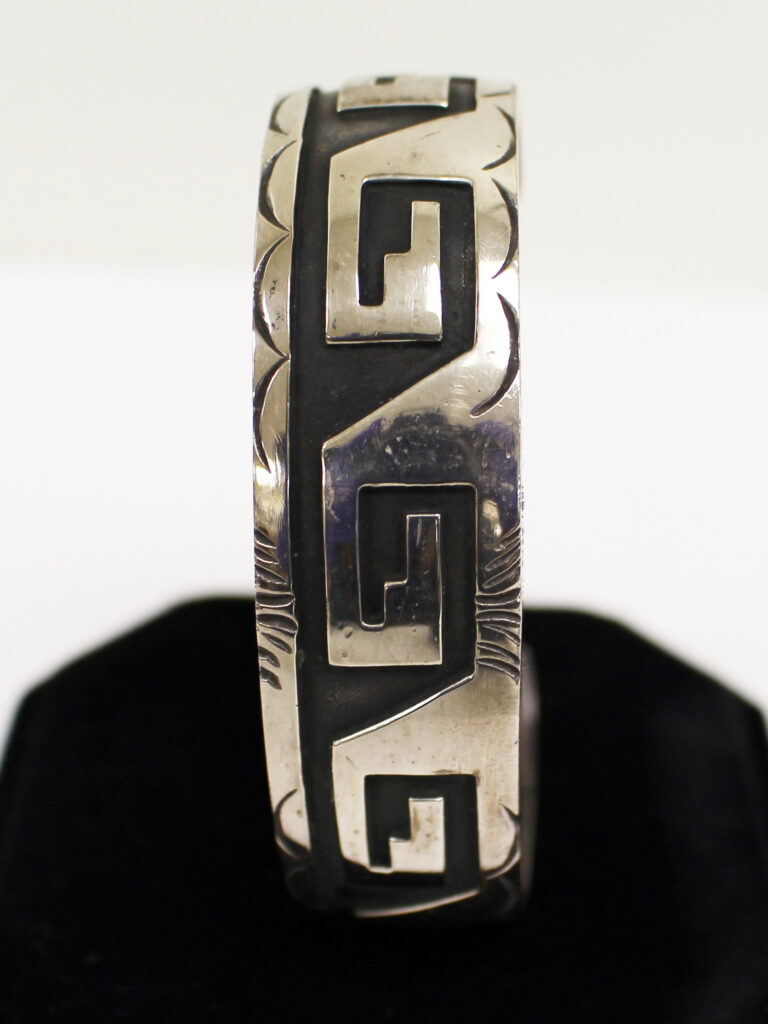
Overlay Cuff Bracelet
On loan from Mr. Frank Warfield
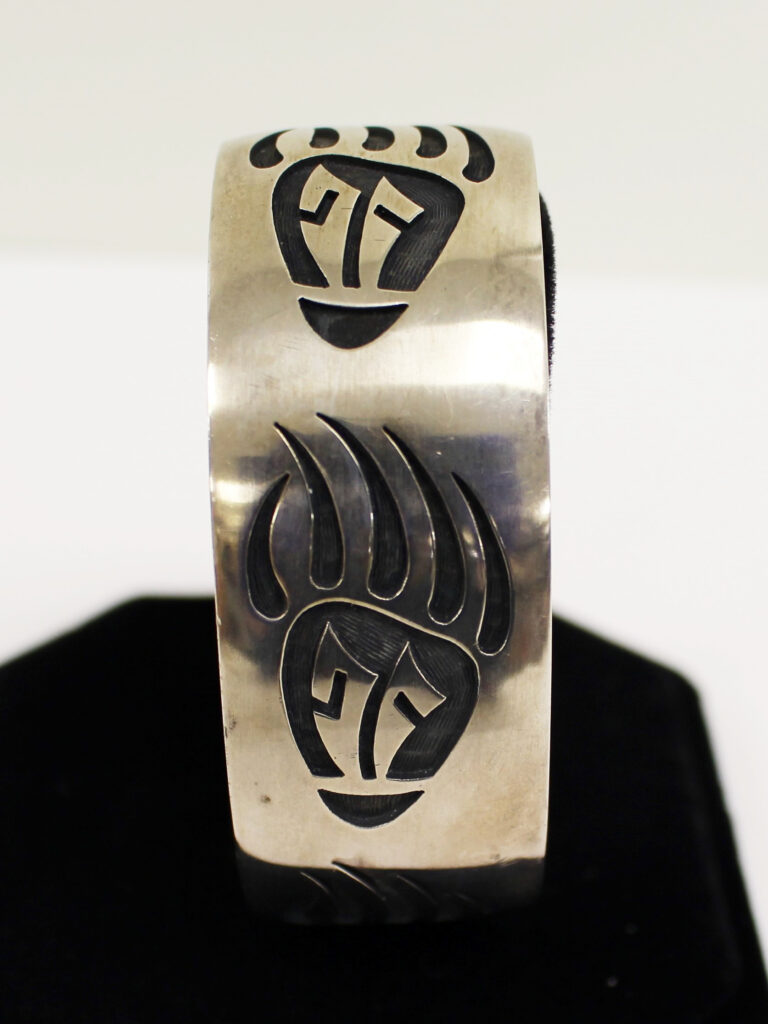
Bear Claw Cuff Bracelet
Lawrence Saufkie (1935-2011)
On loan from Mr. Frank Warfield
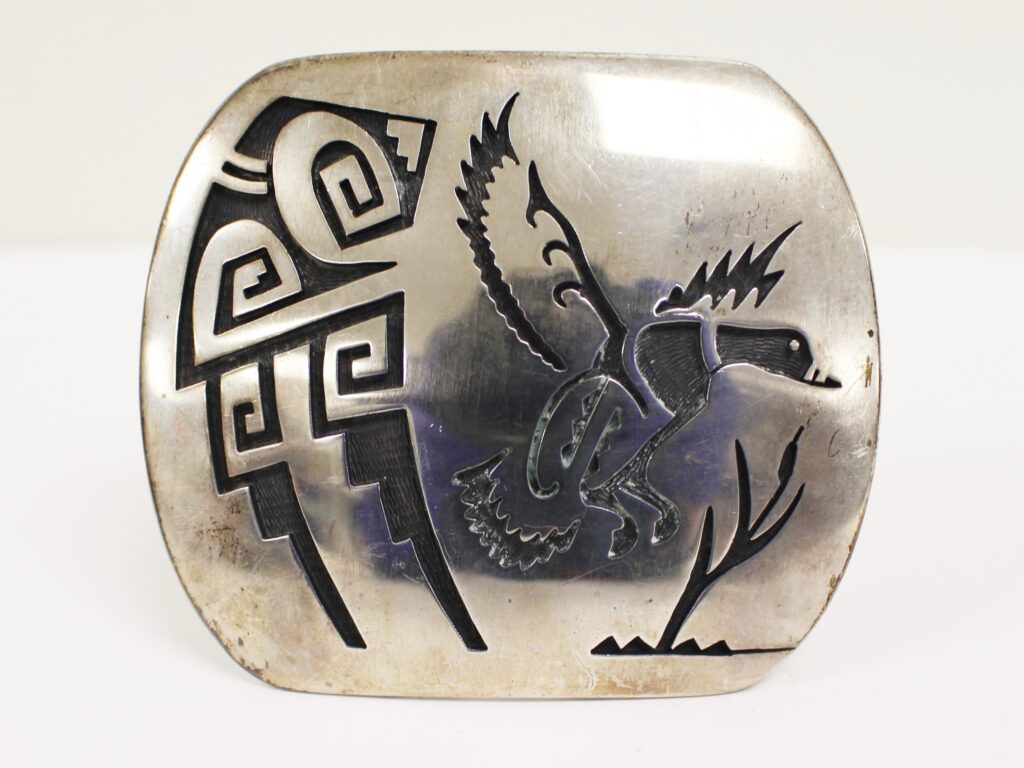
Duck in Flight Belt Buckle
On loan from Mr. Frank Warfield
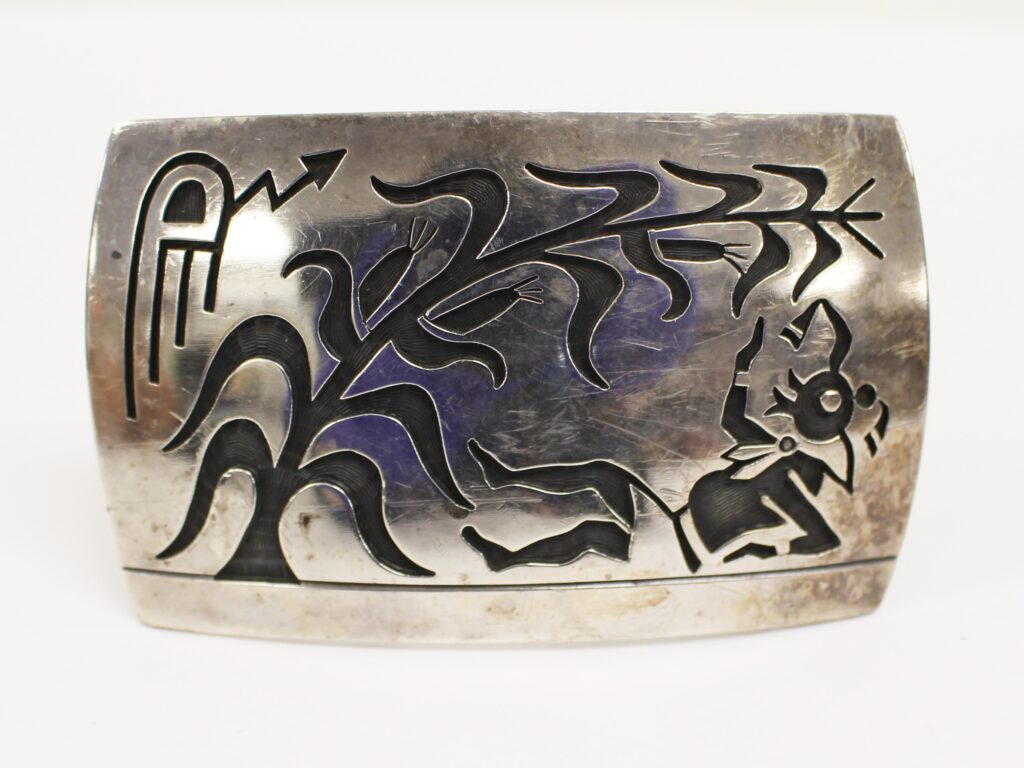
Corn and Kachina Belt Buckle
Lawrence Saufkie (1935-2011)
On loan from Mr. Frank Warfield
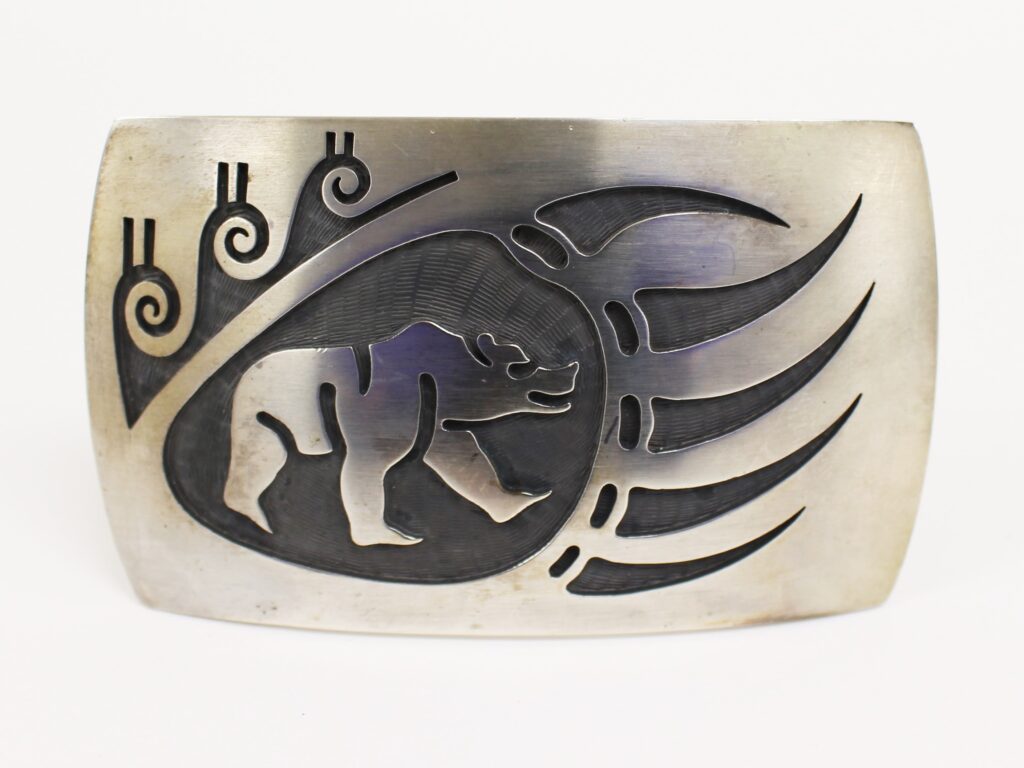
Bear in Claw Belt Buckle
Lawrence Saufkie (1935-2011)
On loan from Mr. Frank Warfield
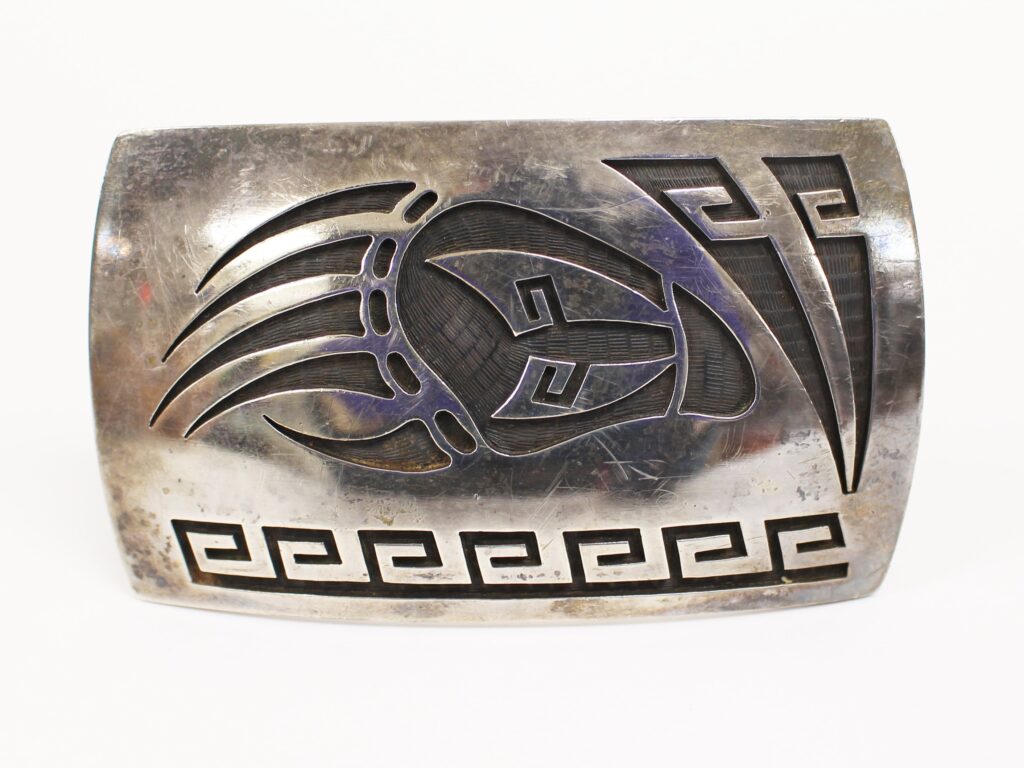
Bear Claw Belt Buckle
Lawrence Saufkie (1935-2011)
On loan from Mr. Frank Warfield
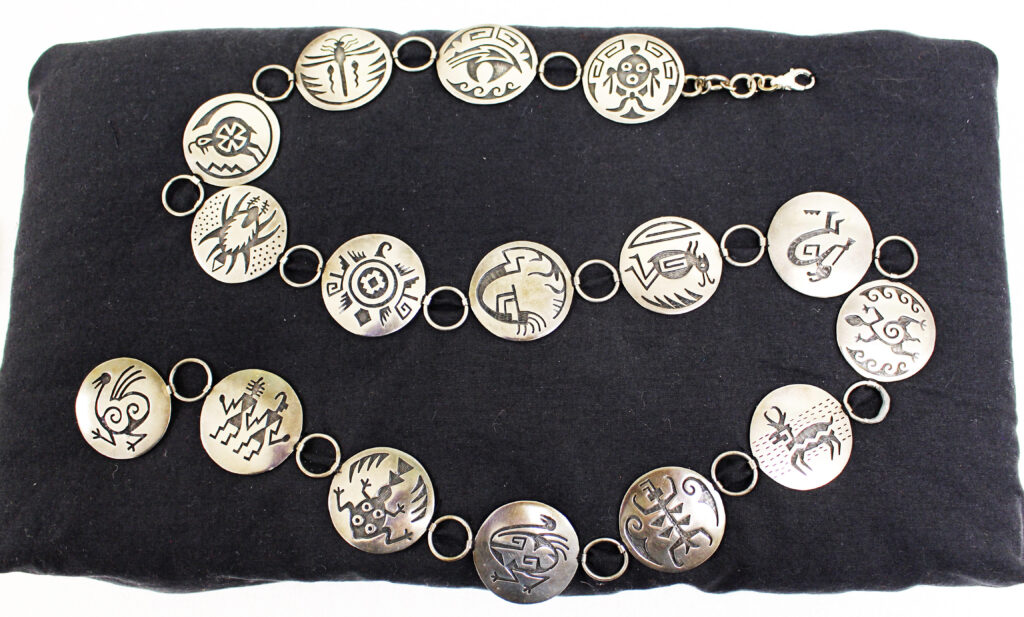
Concho Belt
Manuel Hoyungowa (1953-2011)
On loan from Mr. Frank Warfield
The word concho comes from the Spanish concha which means conch or seashell. The term has come to mean disks of silver used decoratively. Conchos may have been borrowed from Mexican tack items or from the Plains Indians. Two types of concho belts are made. A leather concho belt has disks spaced out on the leather. This is an example of a link belt with the conchos connected by small rings.
Artist Profiles
Manuel Hoyungowa (1953-2011) was from the village of Hotevilla on the Third Mesa. He began his jewelry career in the 1970s after learning Hopi silver overlay and other techniques from his uncle Preston Monongye and at the Institute of American Indian Arts. Hoyungowa created jewelry with turquoise and coral, but he was a master at the silver overlay technique. He used a strong raincloud as his hallmark.
Charles Loloma (1921-1991) was born in the village of Hotevilla on the Third Mesa and was a member of the Badger Clan. He studied ceramics and was a recognized potter. He was also a painter and did murals for the San Francisco Exposition of 1939 and the Museum of Modern Art in New York. Loloma did not become interested in silverwork until he was teaching at the Shongopovi village in 1950. At first, he did only cast work, but eventually he used many different techniques in his workshop. Loloma became known for his unique and exotic jewelry styles. His jewelry was made from various stones, woods, and ivory combined with both silver and gold. He used a stylized signature as his hallmark.
Lawrence Saufkie (1935-2011) was born in the Hopi village of Shongopovi and was a member of the Bear Clan. He learned silversmithing from his father. Saufkie was an extraordinary silversmith and worked until his death in 2011. Saufkie was important to the growth of Hopi overlay jewelry because he was a mentor to many of today’s top silversmiths. He used the bear as his hallmark.
Weaver Selina (1944-) lives in the Shongopovi village on the Second Mesa and is a member of the Sun’s Forehead clan. He began his silversmithing career in 1967 after working and studying at the Hopi Crafts Shop. Over time Selina developed his own methods and techniques to create his silver pieces. Today, Selina owns and operates his own shop where he sells his jewelry and works from other Hopi artists. He uses the Sun’s Forehead as his hallmark.
Explore the other sections of this exhibit:
